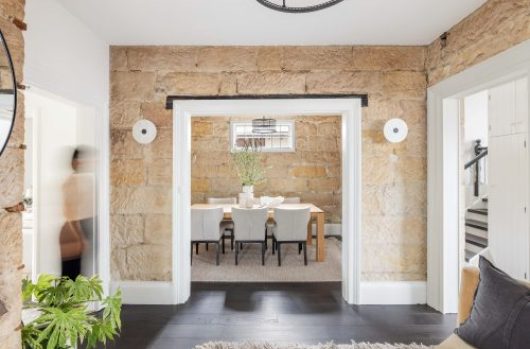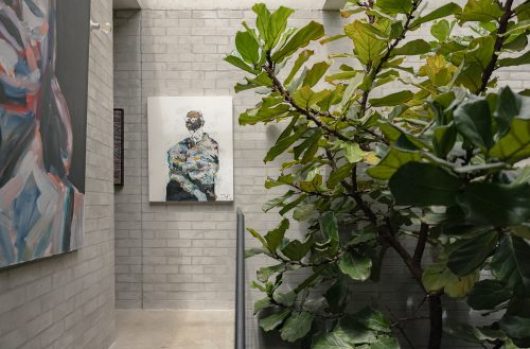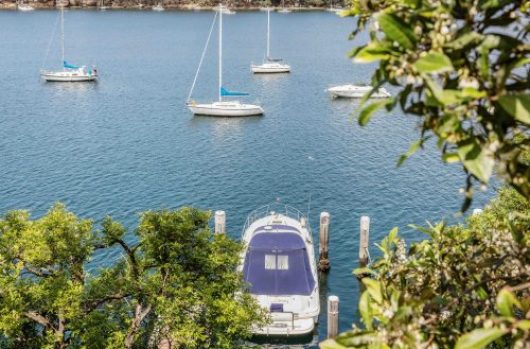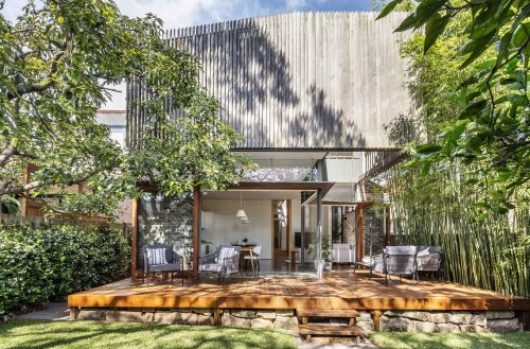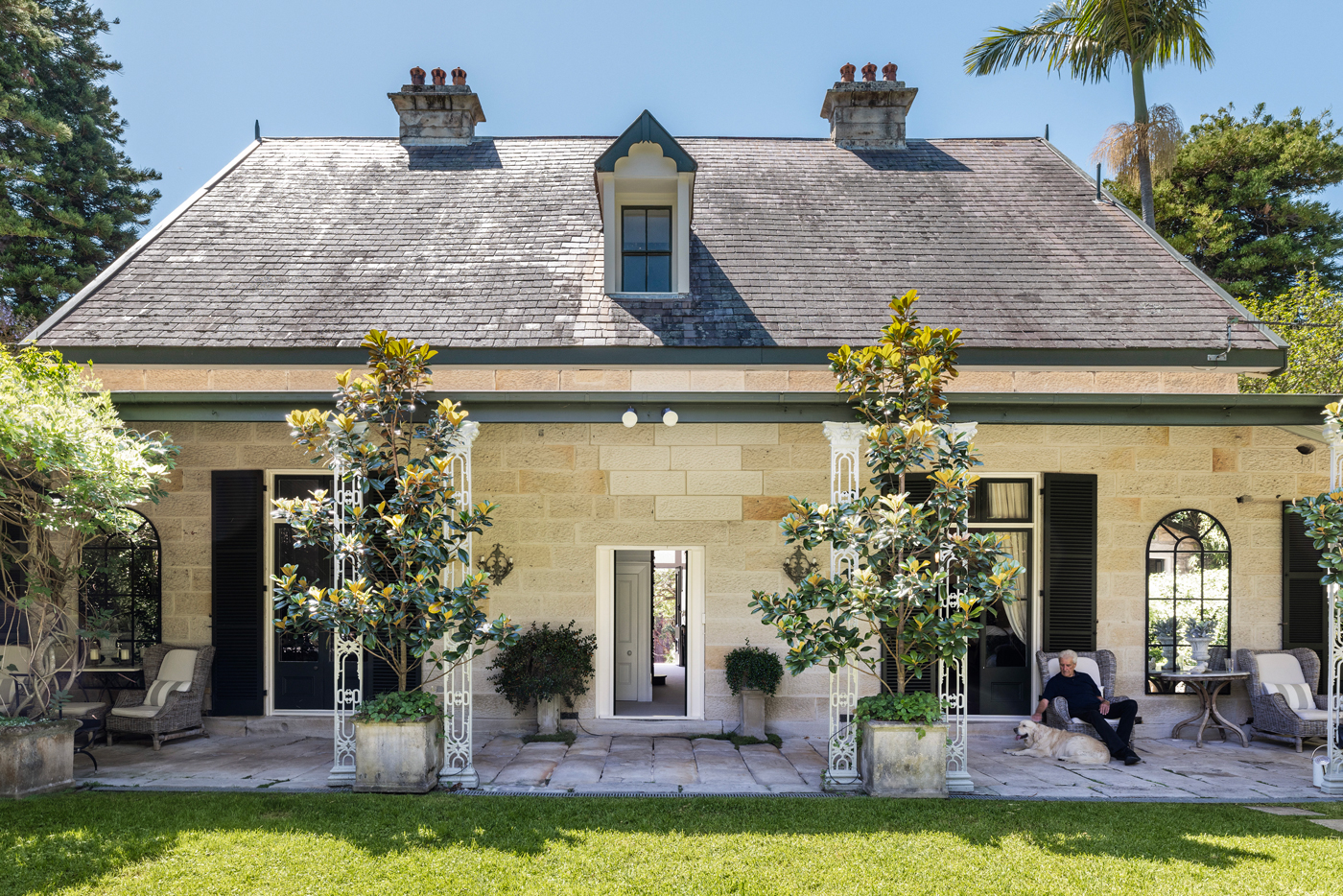
French connection: a house of history in Hunters Hill
In the leafy heart of Hunters Hill, 28 Joubert Street stands not just as a house, but as a living testament to the area’s intertwining of history, architecture, and culture.
This French-inspired masterpiece is credited with being the first creation of mid-1800s resident Didier Joubert. And it’s arguably where Hunters Hill’s distinct nod to France began.
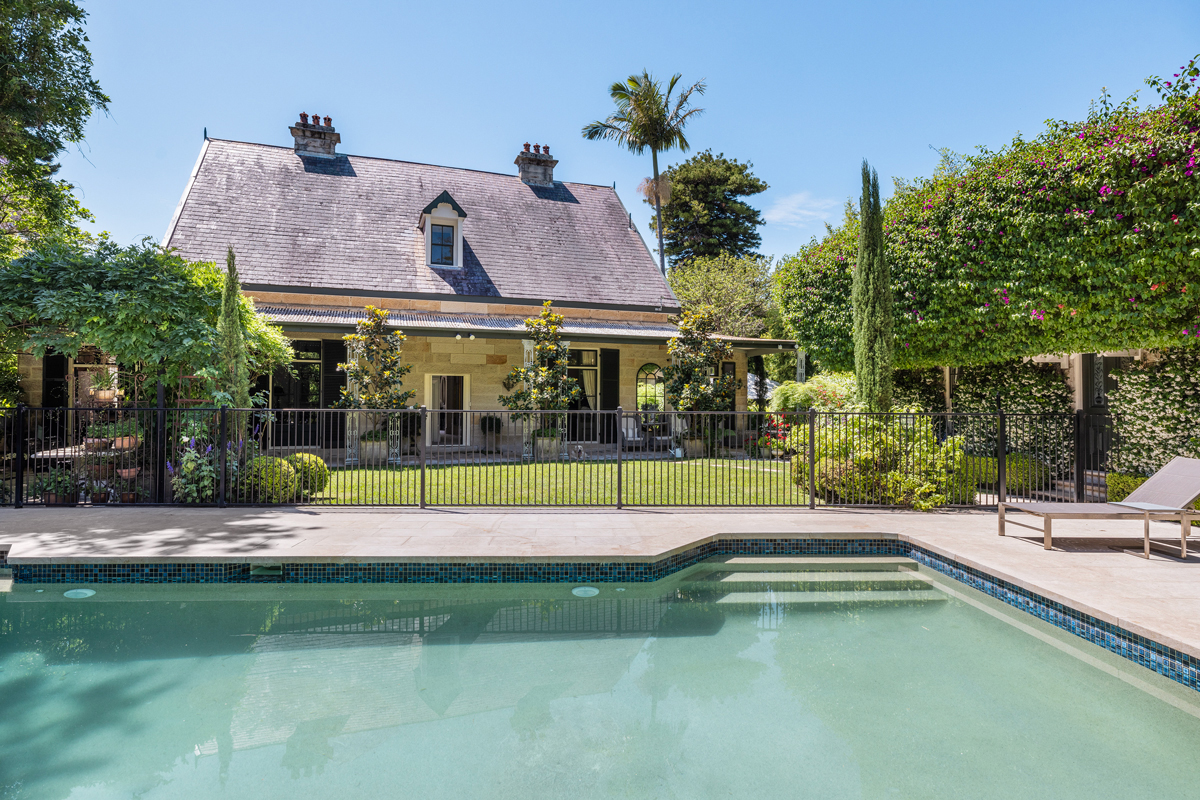
Known as ‘Coorabel’, the grand sandstone home (C1850) now sits on 1334sqm of land with a garden studio and swimming pool. Its majestic entrance stairs lead into a classic, elevated building with a slate roof, precise stonework and immense verandahs with original cast iron detail. Inside, the high ceilings soar above grandly proportioned rooms in a sensitive combination of European architecture and newer contemporary touches. French doors open to expansive covered spaces above the level lawns, amid beautifully landscaped gardens.
Back when it was built, the urban landscape of Hunters Hill underwent similar transformation, through the collaboration of Didier and his brother Jules. Their vision was to subdivide the suburb while establishing a prestigious environment, marked by the inception more of these signature sandstone residences. As their influence resonated, it prompted other French individuals to follow suit, while also drawing on the expertise of Italian stonemasons in nearby areas.
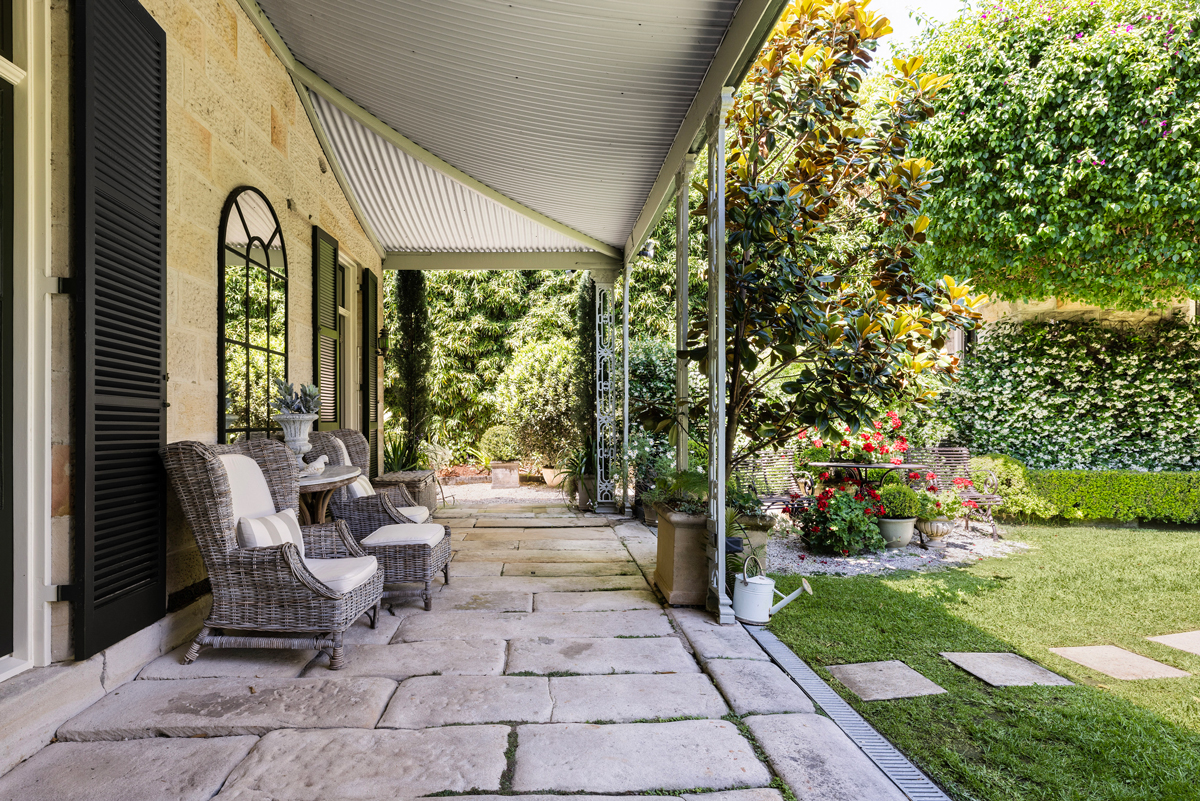
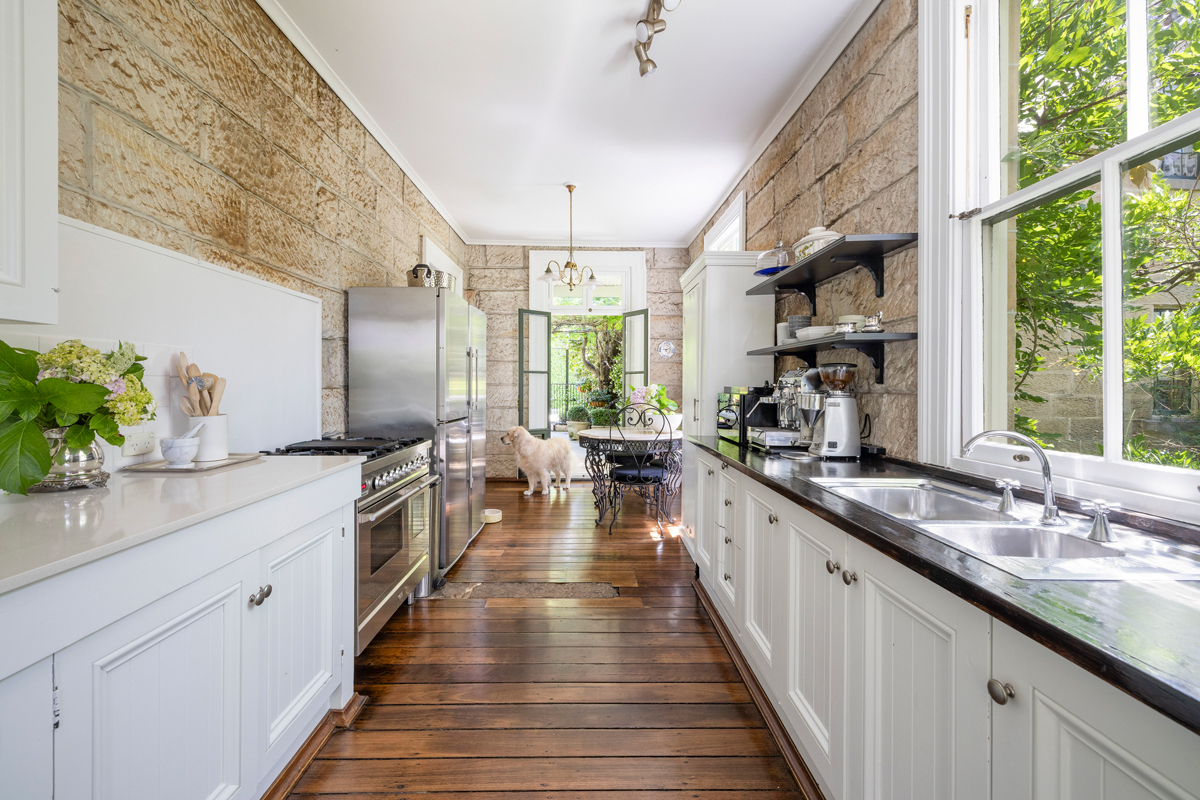
It’s the type of environment that retains a unique romance today, found unexpectedly 9km from a capital city in Australia, It’s an ambiance not lost on Maria, the home’s current custodian.
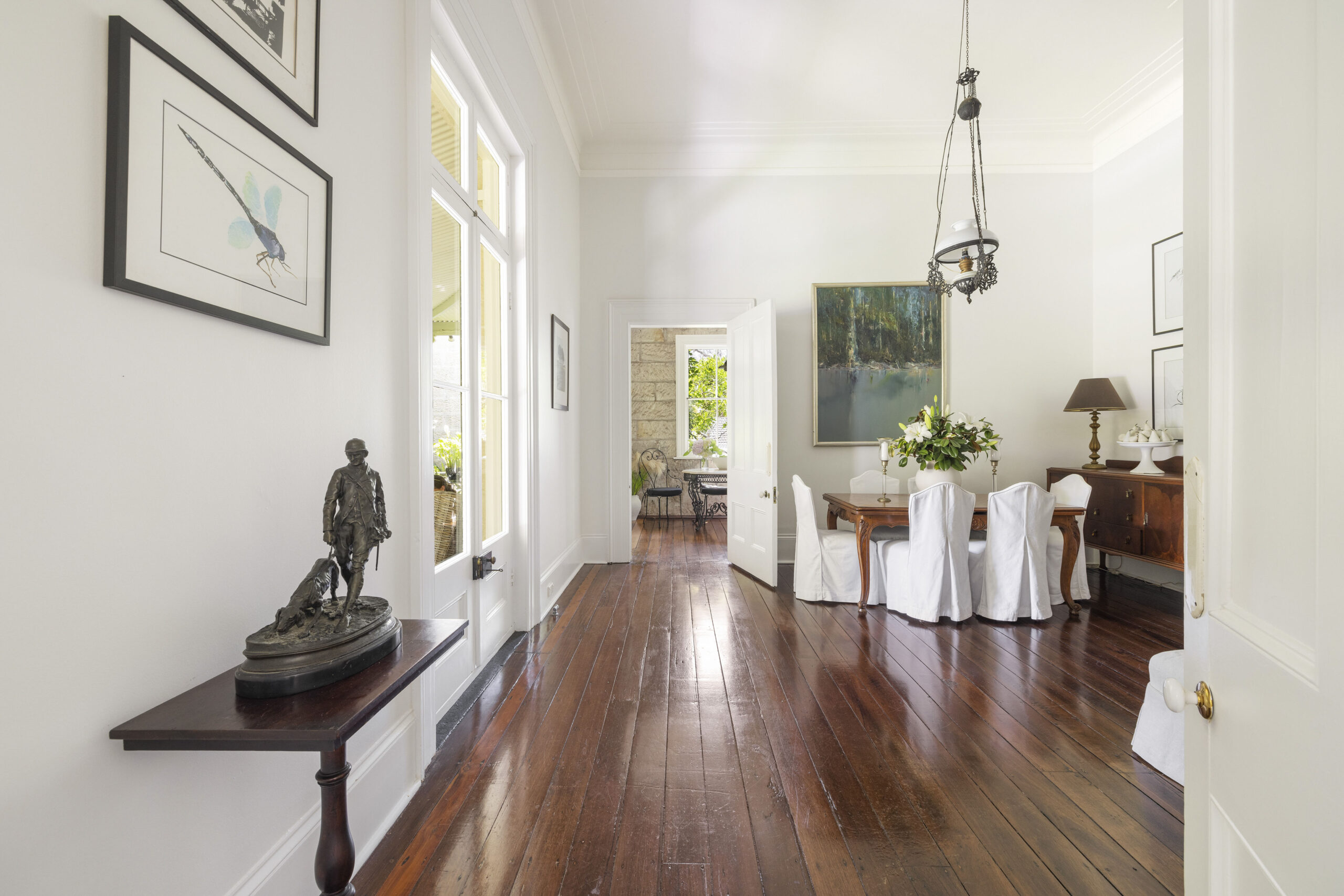
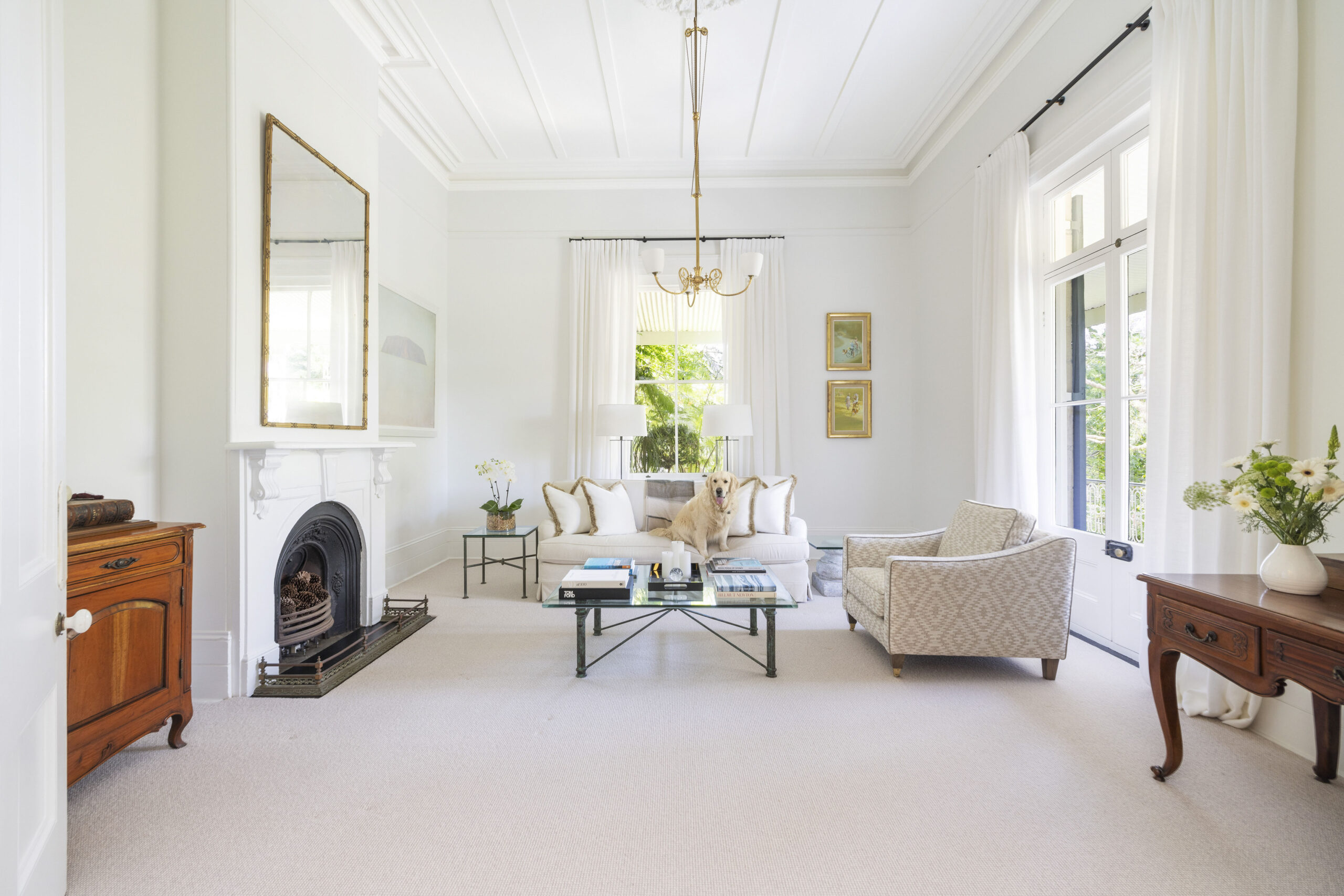
“My dream house up to 1996 would have been a house with a wrap around verandah and poplars,” she says. “Yet I never imagined we would find it in Sydney and so close to the CBD. We were, and in fact still are, after 27 years, in awe of this home’s grand proportions, attention to detail and its sense of permanence.”
It has been described as French Colonial with both Georgian and Victorian features, the local quarried sandstone blocks creating a sense of place. The vast garden is home to poplar, Bangalow palm, jacarandas, pine tree, hedges of sasanquas, camellias, port wine magnolias and orange jasmine. These provide not only a sense of seclusion, but a variety of scents and various displays of colour.
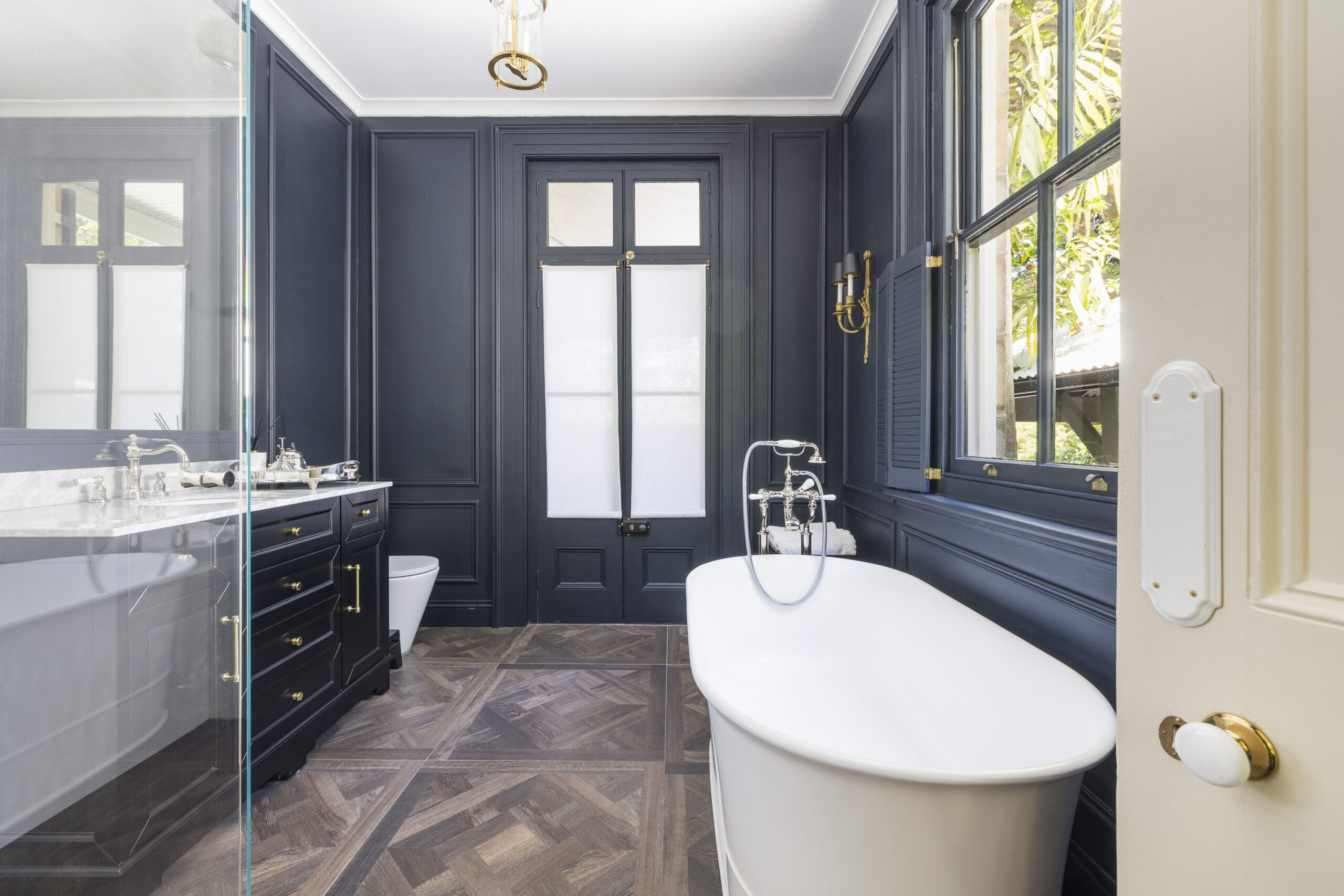
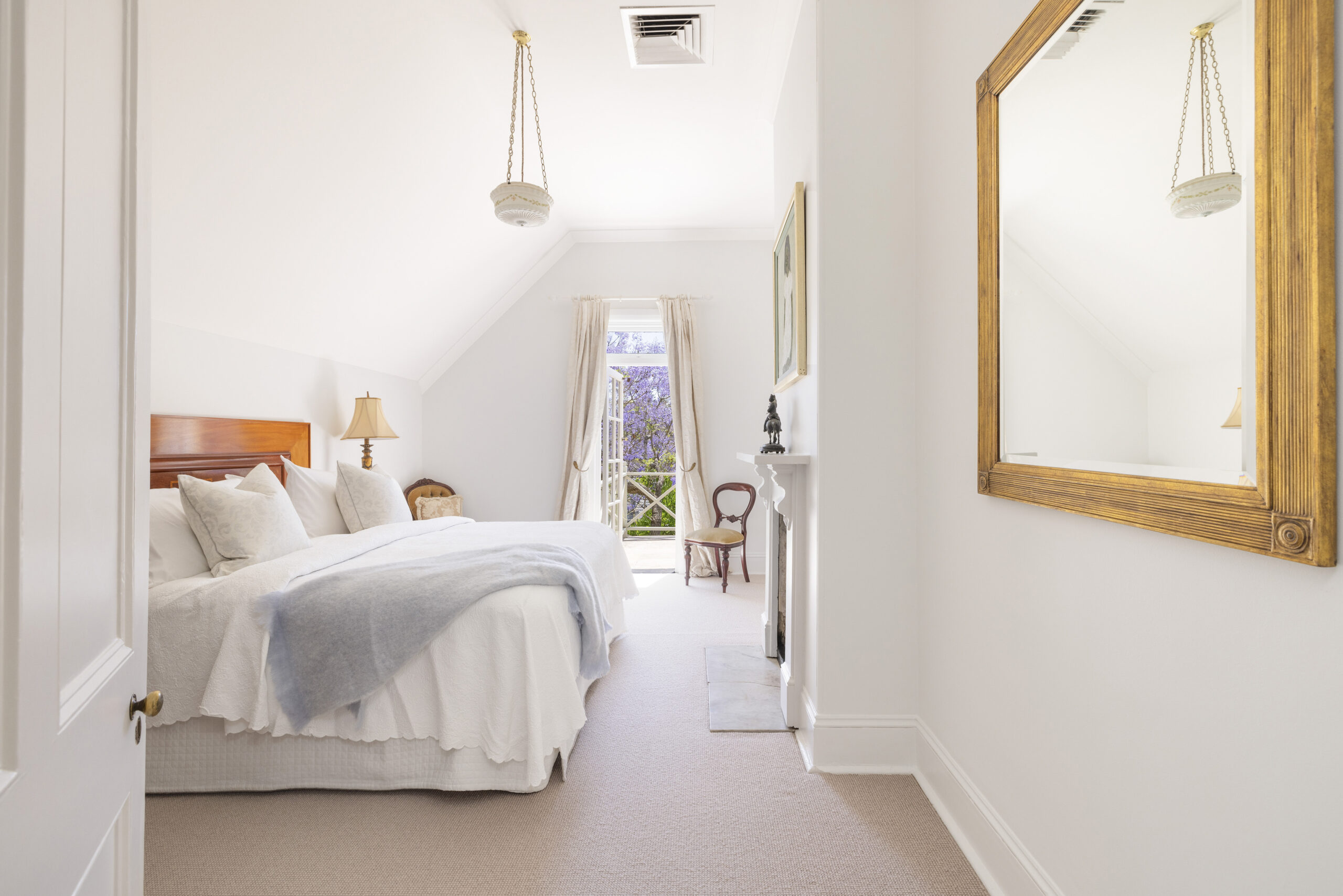
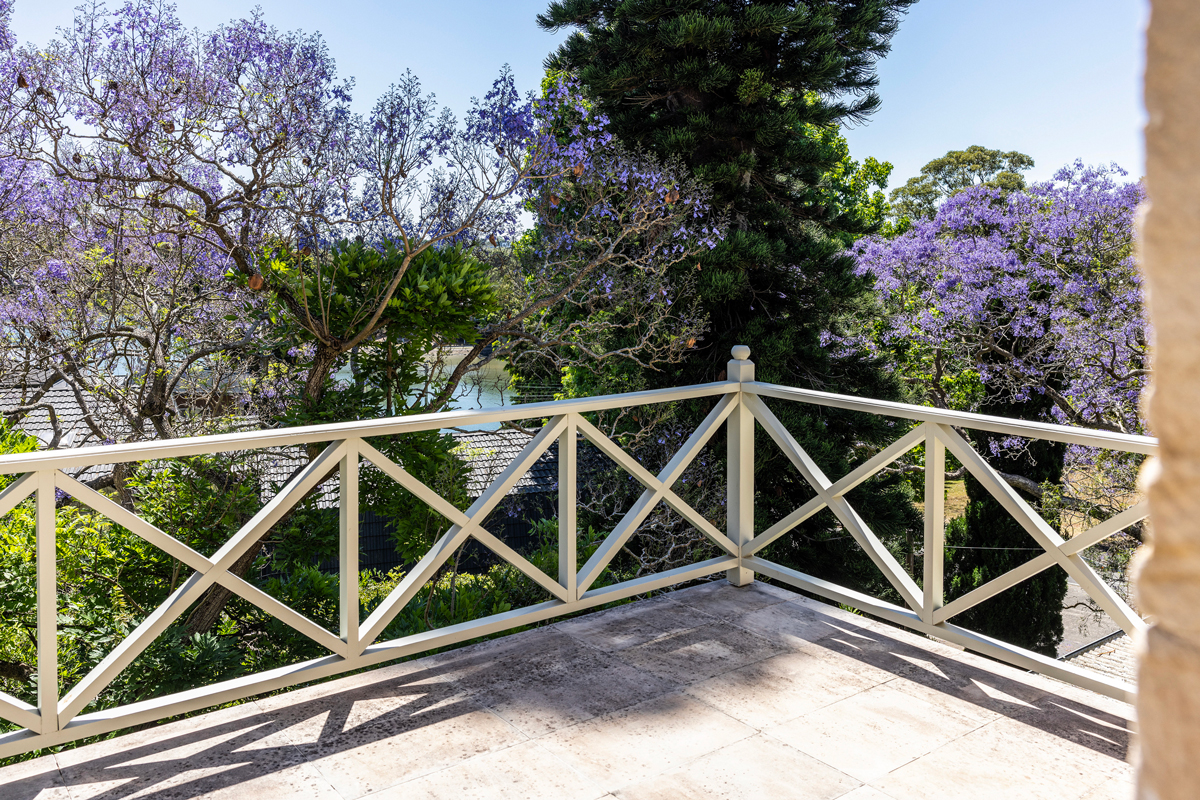
“So often visitors comment on how they feel they could be in a secluded villa somewhere in Provence or Tuscany,” Maria says. “I’ve always loved how the French doors all open out to the verandah which offers various sitting areas perfect for entertaining or just being alone with a book. The rooms even with the surrounding verandah surprisingly all have sunlight streaming in at various times of the day.”
Inside, the block sandstone walls are substantial, mostly rendered in plaster, providing even temperatures throughout the seasons, both cool in summer and retaining heat in the winter. They also significantly insulate the home from any sound travel, both between rooms and from outside noise. It plays with the senses and adds to the transportive experience.
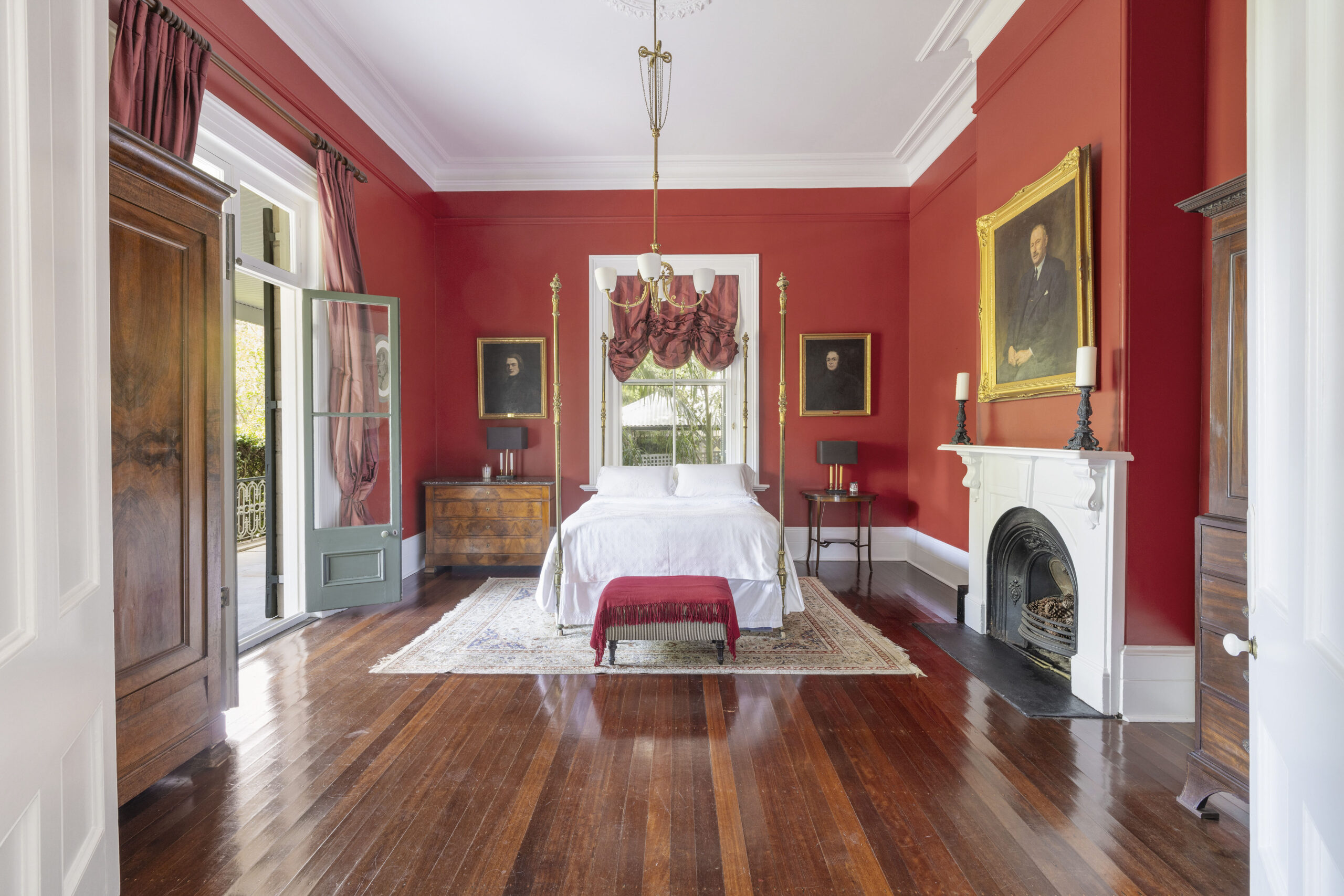
“Whether I’m inside, outdoors sitting on the verandah or in the garden, it has always felt like a home. Inviting, nurturing and inspiring, Maria says. “The things I love about this home are far too difficult to narrow down. I know a new family will continue to be charmed year after year by all it has to offer.”
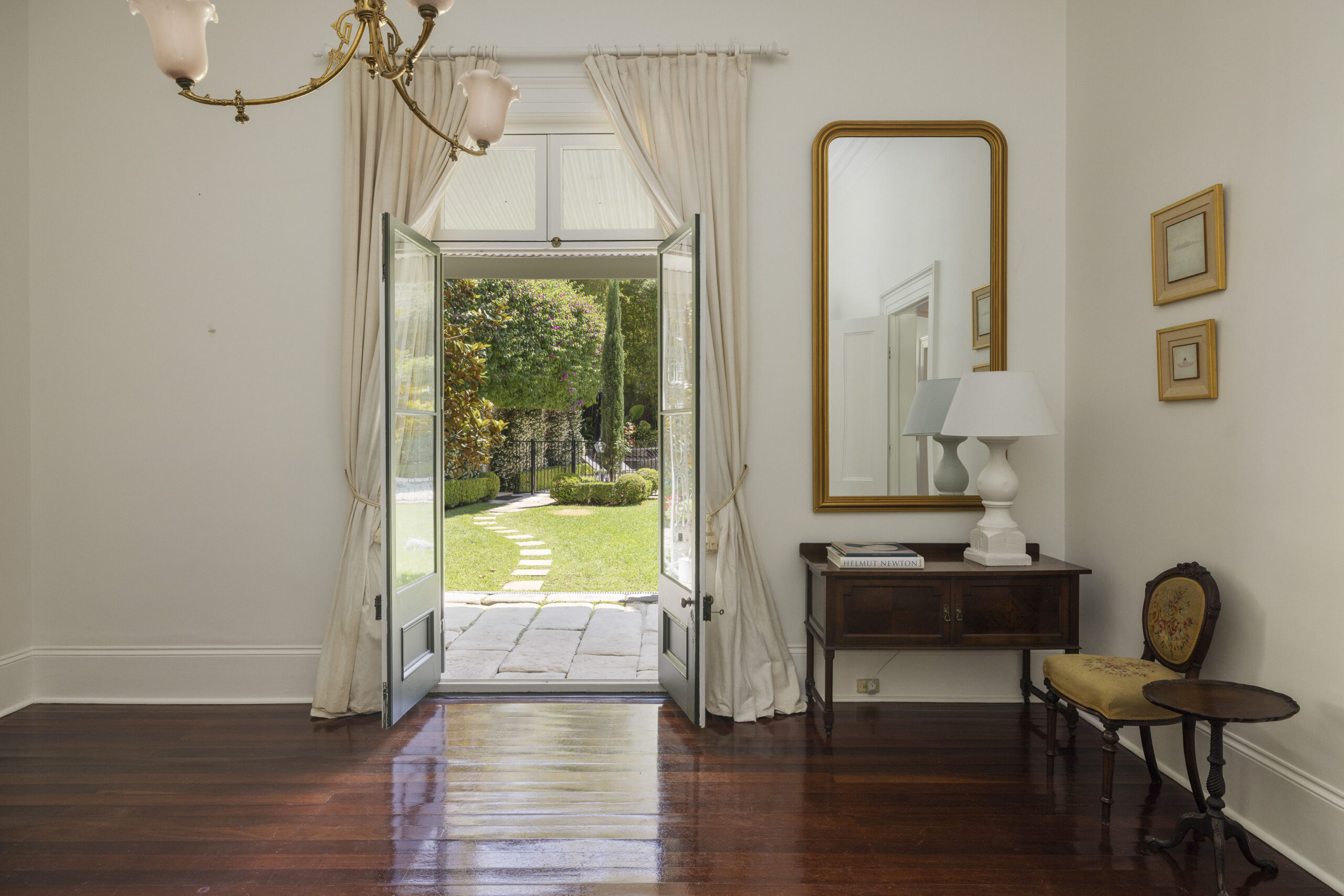
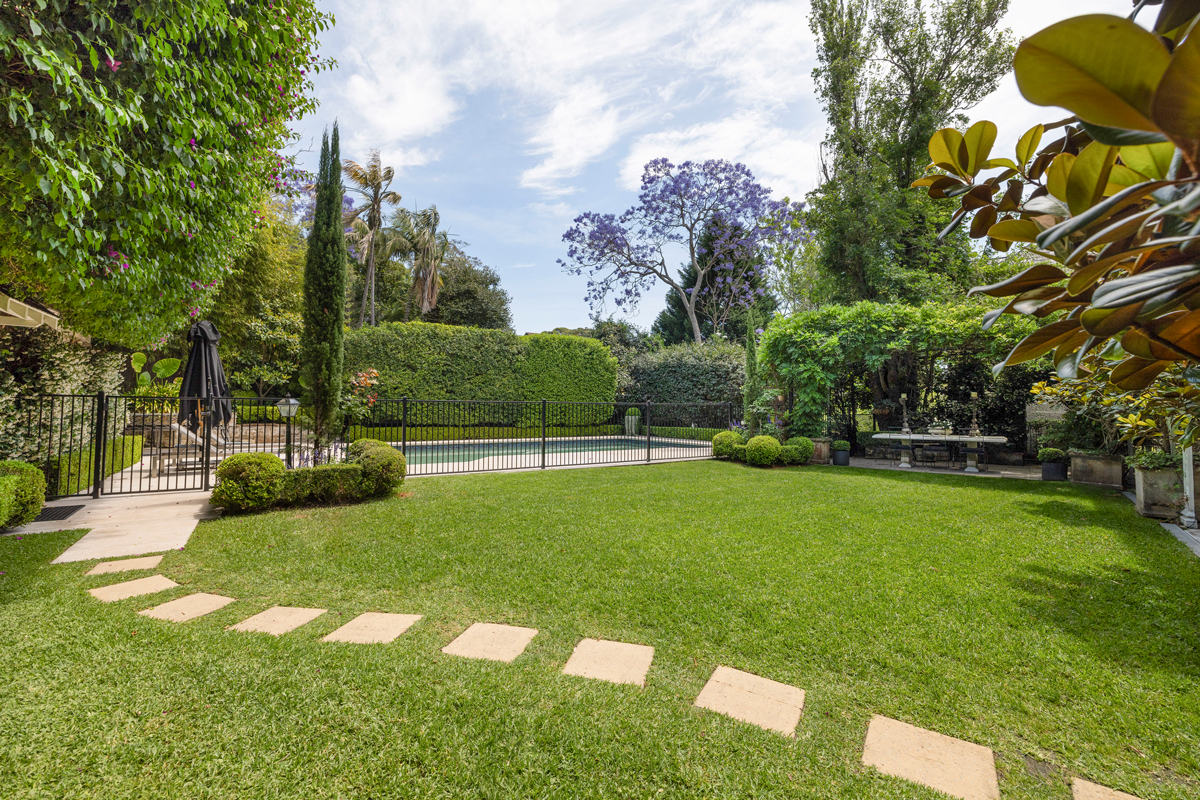
As a journey through time, it’s enchanting. But as a testament to the legacy of Didier Joubert, it’s a celebration of uncompromising vision, resulting in a harmonious coexistence of built form and place.
